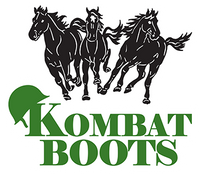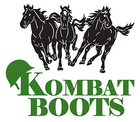University of Findlay, Ohio Independent Study - Lauren Bezold
May, 2007
For my research, I chose a total of 14 horses at the English equestrian facility.
They were chosen based on their ages, which ranged from 2 yrs. to 4 yrs. I used younger horses for this study because they tend to show the quickest response to changes in feed on account their bodies are still growing. The 14 horses were divided into 2 groups: 7 in each. The ages were also split as evenly as possible, with the control group (no supplement) consisting of 2-2 year olds, 2-3 year olds, and 3-4 year olds. The supplement group had 2-2 year olds, 1-3 year old, and 4-4 year olds. The horses' groups were chosen based on their owner's desire to have them in the study, hence the mismatching of ages within each group. Each horse received the required amount of the Kombat Boots product (4 oz, twice per day) and had their weight and hoof growth measured once per week, beginning Feb. 1st and ending April 11 (for a total of 10 weeks). The same was done with the horses in the control group, minus the feeding of the supplement. Each horse also received their regular daily grain/hay ration, and none of them were on any other type of supplement. The hoof growth was measured out from a mark made at the coronary band, and as it grew out the distance between the mark and the coronary band was measured.









Overall, the average hoof growth of the control group was 9.98mm per horse, and the average weight gain was 23lbs. per horse at the end of the study.
For the supplemented group, the average hoof growth was 16.06mm per horse, and the average weight gain was 38lbs. per horse.
In conclusion, I feel that Kombat Boots seems to have a strong positive effect on hoof growth, and, to a lesser extent, increased weight gain in the supplement group of horses when compared to the control group. There was also an increased coat condition and a better shine in three of the supplement group horses: Trey, Annie, and Wilbur, when compared to the coat conditions at the beginning of the study. However, I feel that more research would have to be done on this product in order to determine exactly what makes it so seeming effective on weight gain and hoof growth. Young horses obviously gain weight at a faster rate than older horses, so it would be interesting to perform the same or similar study on older, mature horses to see if they experience the same levels of weight gain that the younger ones do. Also, this study began in the winter and ran through the middle of spring, so the change in weather could also have influenced the conditions of the coats. One thing that surprised me was the amount of product that had to be fed-this probably has something to do with the fact that most nutrients are broken down in the stomach and absorbed in the small intestine, so for a product to reach the hindgut in high enough levels to be effective, it usually has to be fed at higher concentrations. Overall, this product seems to offer some positive results in the areas of hoof growth and weight gain, but more research is needed to determine exactly how the horse utilizes it and what exactly makes it work to increase hoof growth and weight gain. If I was going to do a follow-up on this study, I would like to do a much more intensive project; I would like to utilize high-class athletes(racehorses, and international level dressage and event horses, for example) to see how well this product works on them and if it helps increase their athletic capability and stamina through better digestion, better muscle development, and decreased levels of lactic acid.


